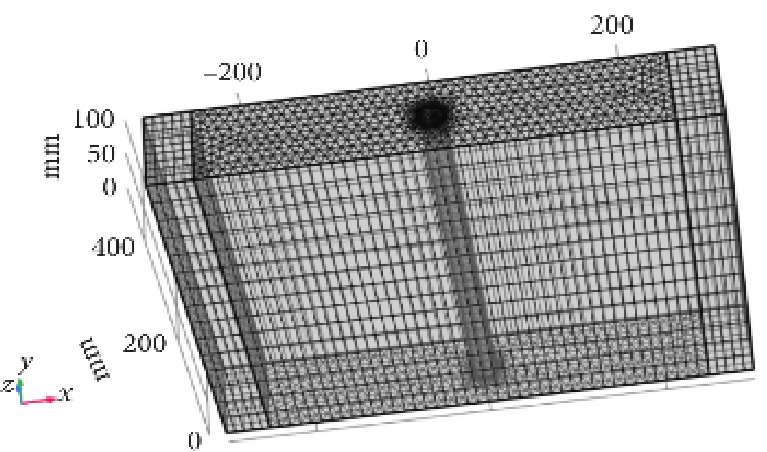Numerical modeling of subsurface temperatures of Oxia Planum, landing site of ExoMars mission
- 1INAF, IAPS, Rome, Italy (michelangelo.formisano@inaf.it)
- 2Italian Space Agency (ASI)
Introduction. Oxia Planum is the selected landing site of the ExoMars mission [1]. A drilling system is installed on the ExoMars rover, able to analyze down two meters in the subsurface of Mars. Among the scientific objectives of the ExoMars mission, the searching of the organics or volatiles species plays an important role. The Ma_Miss spectrometer (Mars Multispectral Imager for Subsurface) [2] will investigate the borehole generated by the drill and it will be able to characterize and map the presence of possible ices. In this work we developed a numerical model to predict the subsurface temperatures after the heat released by the drilling operations. The increase in temperature due to the drilling operations, in fact, could affect the survivor of the volatile species [3]. Here we report the results about subsurface temperature of Oxia Planum.
Numerical modeling
We developed a numerical modeling to predict the subsurface temperature of Oxia Planum. In the subsurface we solve the classical heat equation [3]:
where ρ is the density, c p the specific heat, K the thermal conductivity and T the temperature. Heat transfer occurs only by conduction since convection is negligible due to the small temperature gradients involved as well as the characteristic size of the sample. At the top we imposed a radiation boundary condition. In order to take into account the heat released by the drilling operations we imposed a frictional heating flux on the sides “in contact” with the drill (the lateral sides of the borehole of Fig.1). This flux is defined by the equation [3]:
where η is the coefficient of friction, Fn the thrust, ω the rotational velocity, r the radius of the hole and h the height of the domain of integration (in our case 50 cm).
The parameters adopted in this work are F n = 300 N, rpm = 30 or 60, η = 0.3 or 0.9, tip density = 3500 kg m-3, tip thermal conductivity = 540 W m-1K-1, tip specific heat = 790 J kg-1K-1 and a drilling window of 90 min, characterized by 30 min in “on mode”, followed by 30 min in "off mode” and finally 30 min in “on mode”. The surface and subsurface of Oxia Planum is characterized by a thermal inertia of 650 TIU, with an initial temperature fixed to 200 K. Some assumptions are made: I) instantaneous drilling
(drill excavation is not modeled); 2) constant thrust; 3) constant rotational velocity.

Fig.1: Geometry adopted in this work. The borehole of the drilling system is represented by the cylinder embedded in this domain of integration, with a radius of 13 mm (the thickness of the drill tip).
In Fig.2 we report an example of 1-D temperature profile at z=50 cm (the maximum depth of the borehole). In the x-axis we report the distance from the hole, where shadowed red rectangle identifies the drill (or equivalently the borehole). Top panel of Fig.2 is characterized by rpm=30 and η=0.3 while the bottom panel by rpm=30 and η = 0.9. From these plots we note a difference, in the maximum value after 90 minutes, of about 40 K in favour of the case with η=0.9. The increase in temperature due to the drilling operations, in case of η=0.9, respect the initial assumed value (200 K) is about 80 K. The initial value of 200 K is chosen since is close to the surface equilibrium temperature value for Mars. As in [4] we can calculate the lifetime of an ice spherical deposit of mass m0, with a radius equal to the radius of the drill tip. The relative loss of ice mass at time (t) after the deposit is raised the temperature T is:
where t is the time expressed in seconds. In this equation, Г represent the water rate emission, rp the radius of the tip and рice the density of the ice. By using the maximum sublimation rate, we obtain in case of rpm = 30 and η=0.3 a loss of about 60% of the initial mass, while in case η=0.9 of the loss is complete.
In Fig.2 we report an example of temperature internal profile after the heat released by the drilling operations. Both panels refer to rpm=30: top panel is characterized by η=0.3 while bottom panel by η=0.9.
Summary and Conclusions. We simulated the heat released by the drilling operations in different case of friction (η) and rotatonal speed (rpm) of the drill. We observed that in case of η=0.3 the maximum temperature increase at a depth of 50 cm is about 55 K (with rpm=30) and about 75 K (with rpm=60), while in case of η=0.9, the maximum temperature increase becomes 90 K (with rpm=30) and 130 K (with rpm=60) [3]. We also calculated the sublimation rate and the lifetime of a hypothetical spherical ice-rich deposit, with a radius equal to the size of the tip of the drill. We obtained that, after 90 minutes from the start of our simulations, in the coldest scenario (η=0.3 and rpm=30) the remaining initial mass is about the 60%, while in the other scenarios we have a complete loss of the mass [3]. Future improvements in the numerical model (e.g. a complete treatment of the diffusion of volatiles) as well as validation with laboratory experiments will be made.
Acknowledgments. This work is funded and supported by the Italian Space Agency (ASI) [Grant ASI-INAF n. 2017-48-H.0].
References [1] Vago J.L. et al. 2017; [2] De Sanctis M.C. et al 2017; [3] Formisano M. et al. 2021; [4] Andreas E.L. 2007; [5] Coradini A. et al. 2001
How to cite: Formisano, M., De Sanctis, M. C., Federico, C., Magni, G., Altieri, F., Ammannito, E., De Angelis, S., Ferrari, M., and Frigeri, A.: Numerical modeling of subsurface temperatures of Oxia Planum, landing site of ExoMars mission, Europlanet Science Congress 2022, Granada, Spain, 18–23 Sep 2022, EPSC2022-839, https://doi.org/10.5194/epsc2022-839, 2022.